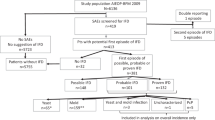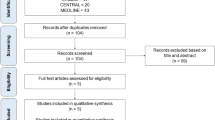Abstract
systemic fungal infections are a major problem in bone marrow transplant recipients who have prolonged neutropenia or who receive high-dose corticosteroids. prophylaxis with fluconazole or low-dose amphotericin b reduces, but does not eliminate these infections. to determine which prophylactic agent is better, we performed a prospective randomized study. patients undergoing allogeneic (related or unrelated) or autologous marrow or peripheral stem cell transplantation were randomized to receive fluconazole (400 mg/day p.o. or i.v.) or amphotericin b (0.2 mg/kg/day i.v.) beginning 1 day prior to stem cell transplantation and continuing until recovery of neutrophils to >500/μl. patients were removed from their study drug for drug-associated toxicity, invasive fungal infection or suspected fungal infection (defined as the presence of fever >38°C without positive culture while on broad-spectrum anti-bacterial antibiotics). Proven or suspected fungal infections were treated with high-dose amphotericin B (0.5–0.7 mg/kg/day). Patients were randomized at each institution and stratified for the type of transplant. The primary end-point of the study was prevention of documented fungal infection; secondary endpoints included fungal colonization, drug toxicity, duration of hospitalization, duration of fever, duration of neutropenia, duration and total dose of high-dose amphotericin B and overall survival to hospital discharge. From July 1992 to October 1994, a total of 355 patients entered into the trial with 159 patients randomized to amphotericin B and 196 to Fluconazole. Patient groups were comparable for diagnosis, age, sex, prior antibiotic or antifungal therapy, use of corticosteroids prior to transplantation and total duration of neutropenia. Amphotericin B was significantly more toxic than Fluconazole especially in related allogeneic transplantation where 19% of patients developed toxicity vs 0% of Fluconazole recipients (p < 0.05). approximately 44% of all patients were removed from prophylaxis for presumed fungal infection. proven fungal infections occurred in 4.1% and 7.5% of fluconazole and amphotericin-treated patients, respectively. proven fungal infections occurred in 9.1% and 14.3% of related allogeneic marrow recipients receiving fluconazole or amphotericin b, respectively, and 2.1% and 5.6% of autologous marrow recipients receiving fluconazole or amphotericin b, respectively (P > 0.05). In this prospective trial, low-dose amphotericin B prophylaxis was as effective as Fluconazole prophylaxis, but Fluconazole was significantly better tolerated. Bone Marrow Transplantation (2000) 25 , 853–859.
This is a preview of subscription content, access via your institution
Access options
Subscribe to this journal
Receive 12 print issues and online access
$259.00 per year
only $21.58 per issue
Buy this article
- Purchase on Springer Link
- Instant access to full article PDF
Prices may be subject to local taxes which are calculated during checkout
Similar content being viewed by others
References
Khardori N, Bodey, GP . Infections in hematologic malignancies Hematology 1991 14: 363–424
Verfaillie C, Weisdorf D, Haake R et al. Candida infections in bone marrow transplant recipients Bone Marrow Transplant 1991 8: 177–184
Klastersky J . Febrile neutropenia Curr Opin Oncol 1993 5: 625–632
Koll BS, Brown AE . Changing patterns of infections in the immunocompromised patient with cancer Hematol/Oncol Clin North Am 1993 7: 753–769
Heurlin N, Bergstrom SE, Winiarski J et al. Fungal pneumonia: the predominant lung infection causing death in children undergoing bone marrow transplantation Acta Paediatr 1996 85: 168–172
Gamis AS, Gudnason T, Giebink GS, Ramsay NKC . Disseminated infection with fusarium in recipients of bone marrow transplants Rev Infect Dis 1991 13: 1077–1088
Uderzo C, Angelo PD, Rizzari C et al. Central venous catheter-related complications after bone marrow transplantation in children with hematological malignancies Bone Marrow Transplant 1991 9: 113–117
Guiot HF, Fibbe WE, van't Wout JW . Risk factors for fungal infection in patients with malignant hematologic disorders: implications for empirical therapy and prophylaxis Clin Infect Dis 1994 18: 525–532
Goodman JL, Winston DJ, Greenfield RA et al. A controlled trial of fluconazole to prevent fungal infections in patients undergoing bone marrow transplantation New Engl J Med 1992 326: 845–851
Winston DJ, Chandrasekar PH, Lazarus HM et al. Fluconazole prophylaxis of fungal infections in patients with acute leukemia. Results of a randomized placebo-controlled, double-blind, multicenter trial Ann Intern Med 1993 118: 495–503
Slavin MA, Osborne B, Adams R et al. Efficacy and safety of fluconazole prophylaxis for fungal infections after marrow transplantation – a prospective, randomized, double-blind study J Infect Dis 1995 171: 1545–1552
Kruger W, Sobottka I, Stockschlader M et al. Fatal outcome of disseminated candidosis after allogeneic bone marrow transplantation under treatment with liposomal and conventional amphotericin-B. A report of 4 cases with determination of the Mic values Scand J Infect Dis 1996 28: 313–316
Jehu V . Managing fungal and viral infections in the immunocompromised host Rec Res Cancer Res 1988 108: 61–70
Winston DJ . Prophylaxis and treatment of infection in the bone marrow transplant recipient Curr Clin Topics Infect Dis 1993 13: 293–321
Walsh TJ, Finberg RW, Arndt C et al. Liposomal amphotericin B for empirical therapy in patients with persistent fever and neutropenia. National Institute of Allergy and Infectious Diseases Mycoses Study Group New Engl J Med 1999 340: 764–771
Pasic S, Flannagan L, Cant AJ . Liposomal amphotericin (AmBisome) is safe in bone marrow transplantation for primary immunodeficiency Bone Marrow Transplant 1997 19: 1229–1232
Chopra R, Fielding A, Goldstone AH . Successful treatment of fungal infections in neutropenic patients with liposomal amphotericin (AmBisome) – a report on 40 cases from a single centre Leuk Lymphoma 1992 7: (Suppl1) 73–77
Kruger W, Stockschlader M, Russmann B et al. Experience with liposomal Amphotericin-B in 60 patients undergoing high-dose therapy and bone marrow or peripheral blood stem cell transplantation Br J Haematol 1995 91: 684–690
Kruger W, Stockschlader M, Sobottka I et al. Antimycotic therapy with liposomal amphotericin-B for patients undergoing bone marrow or peripheral blood stem cell transplantation Leuk Lymphoma 1997 24: 491–499
Fluconazole Med Lett 1990 32: 50–52
Gotzsche PC, Johansen HK . Meta-analysis of prophylactic or empirical antifungal treatment vs placebo or no treatment in patients with cancer complicated by neutropenia Br Med J 1997 314: 1238–1244
Ehninger G, Schuler HK, Sarnow E . Fluconazole in the prophylaxis of fungal infection after bone marrow transplantation Mycoses 1996 39: 259–263
O'Donnell MR, Schmidt GM, Tegtmeier BR et al. Prediction of systemic fungal infection in allogeneic marrow recipients: impact of amphotericin prophylaxis in high-risk patients J Clin Oncol 1994 12: 827–834
Powles RL, Milliken S . The prophylaxis of fungal infections J Antimicrob Chemother 1991 28: (Suppl. A) 97–103
Quabeck K, Muller KD, Beelen DW et al. Prophylaxis and treatment of fungal infections with fluconazole in bone marrow transplant patients Mycoses 1992 35: 221–224
Tollemar J, Ringden O, Andersson S et al. Randomized double-blind study of liposomal amphotericin B (AmBisome) prophylaxis of invasive fungal infections in bone marrow transplant recipients Bone Marrow Transplant 1993 12: 577–582
Ringden O, Andstrom EE, Remberger M et al. Prophylaxis and therapy using liposomal amphotericin B (AmBisome) for invasive fungal infections in children undergoing organ or allogeneic bone-marrow transplantation Pediatr Transplant 1997 1: 124–129
Perfect JR, Klotman ME, Gilbert CC et al. Prophylactic intravenous Amphotericin B in neutropenic autologous bone marrow transplant recipients J Infect Dis 1992 165: 891–897
Schwartz S, Behre G, Heinemann V et al. Aerosolized amphotericin B inhalations as prophylaxis of invasive aspergillus infections during prolonged neutropenia: results of a prospective randomized multicenter trial Blood 1999 93: 3654–3661
Hertenstein B, Kern WV, Schmeiser T et al. Low incidence of invasive fungal infections after bone marrow transplantation in patients receiving amphotericin B inhalations during neutropenia Ann Hematol 1994 68: 21–26
Kelsey SM, Goldman JM, McCann S et al. Liposomal amphotericin (AmBisome) in the prophylaxis of fungal infections in neutropenic patients: a randomised, double-blind, placebo-controlled study Bone Marrow Transplant 1999 23: 163–168
Wingard JR, Merz WG, Rinaldi MG et al. Increase in Candida krusei infection among patients with bone marrow transplantation and neutropenia treated prophylactically with fluconazole New Engl J Med 1991 325: 1274–1277
Bearman SI, Appelbaum FR, Buckner CD et al. Regimen-related toxicity in patients undergoing bone marrow transplantation J Clin Oncol 1988 6: 1562–1568
De Laurenzi A, Matteocci A, Lanti A et al. Amphotericin B prophylaxis against invasive fungal infections in neutropenic patients: a single center experience from 1980 to 1995 Infection 1996 24: 361–366
Chandrasekar PH, Gatny CM . The effect of fluconazole prophylaxis on fungal colonization in neutropenic cancer patients. Bone Marrow Transplantation Team J Antimicrob Chemother 1994 33: 309–318
Rousey SR, Russler S, Gottlieb M, Ash RC . Low-dose amphotericin B prophylaxis against invasive aspergillus infections in allogeneic marrow transplantation Am J Med 1991 91: 484–492
Chandrasekar PH, Gatny CM . Effect of fluconazole prophylaxis on fever and use of amphotericin in neutropenic cancer patients. Bone Marrow Transplantation Team Chemotherapy 1994 40: 136–143
Author information
Authors and Affiliations
Rights and permissions
About this article
Cite this article
Wolff, S., Fay, J., Stevens, D. et al. Fluconazole vs low-dose amphotericin B for the prevention of fungal infections in patients undergoing bone marrow transplantation: a study of the North American Marrow Transplant Group. Bone Marrow Transplant 25, 853–859 (2000). https://doi.org/10.1038/sj.bmt.1702233
Received:
Accepted:
Published:
Issue Date:
DOI: https://doi.org/10.1038/sj.bmt.1702233
Keywords
This article is cited by
-
Synergistic potential of α-Phellandrene combined with conventional antifungal agents and its mechanism against antibiotic resistant Candida albicans
CABI Agriculture and Bioscience (2024)
-
Network meta-analysis of triazole, polyene, and echinocandin antifungal agents in invasive fungal infection prophylaxis in patients with hematological malignancies
BMC Cancer (2021)
-
Systematic review and mixed treatment comparison meta-analysis of randomized clinical trials of primary oral antifungal prophylaxis in allogeneic hematopoietic cell transplant recipients
BMC Infectious Diseases (2015)
-
Mould-active compared with fluconazole prophylaxis to prevent invasive fungal diseases in cancer patients receiving chemotherapy or haematopoietic stem-cell transplantation: a systematic review and meta-analysis of randomised controlled trials
British Journal of Cancer (2012)
-
The impact of oral herpes simplex virus infection and candidiasis on chemotherapy-induced oral mucositis among patients with hematological malignancies
European Journal of Clinical Microbiology & Infectious Diseases (2011)



